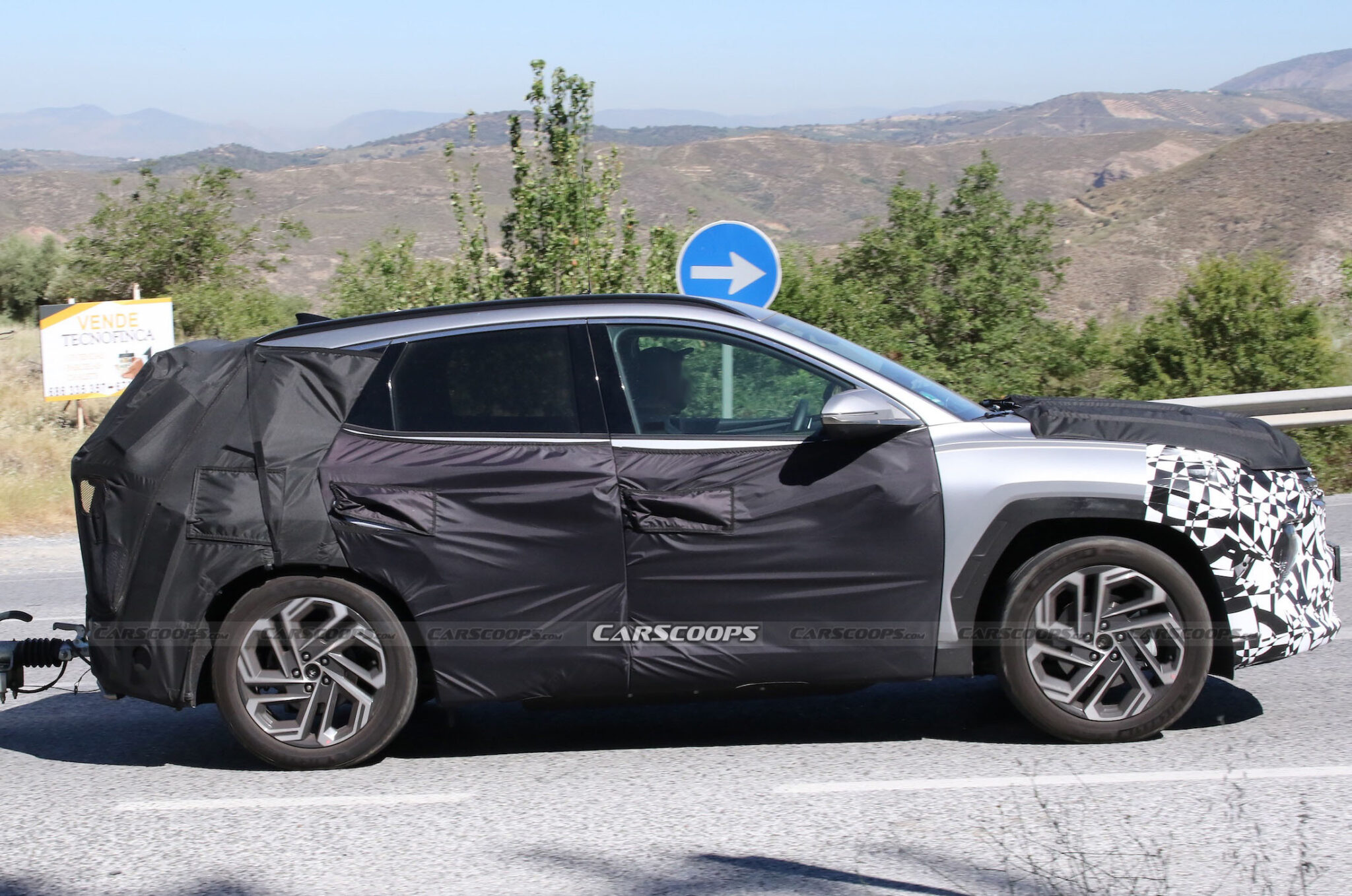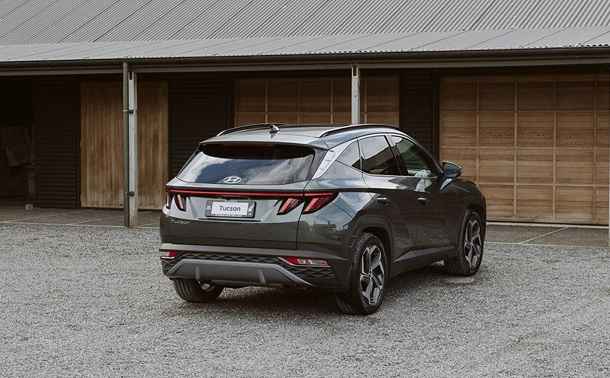A Comprehensive Look at the 2025 Hyundai Tucson’s Safety Features
A Comprehensive Look at the 2025 Hyundai Tucson’s Safety Features
Introduction
With enthusiasm, let’s navigate through the intriguing topic related to A Comprehensive Look at the 2025 Hyundai Tucson’s Safety Features. Let’s weave interesting information and offer fresh perspectives to the readers.
Table of Content
A Comprehensive Look at the 2025 Hyundai Tucson’s Safety Features

The Hyundai Tucson has consistently been praised for its blend of style, technology, and practicality. However, for many car buyers, safety is paramount. The 2025 model year promises to continue this trend, boasting an impressive array of safety features designed to protect occupants and enhance driving confidence. While official crash test ratings from organizations like the IIHS (Insurance Institute for Highway Safety) and NHTSA (National Highway Traffic Safety Administration) are not yet available, the 2025 Tucson’s suite of safety technologies suggests it will achieve high marks.
A Deeper Dive into the 2025 Hyundai Tucson’s Safety Features:
The 2025 Tucson is equipped with Hyundai’s SmartSense suite of advanced driver-assistance systems (ADAS), which encompass a wide range of technologies:
-
Forward Collision-Avoidance Assist (FCA): This system uses sensors to detect potential collisions ahead, automatically applying the brakes if necessary. It can even detect pedestrians and cyclists, enhancing pedestrian safety.
-
Lane Keeping Assist (LKA): LKA helps drivers stay centered in their lane by gently steering the vehicle back if it detects unintentional drifting. This feature can significantly reduce the risk of lane departure accidents.
-
Blind Spot Collision-Avoidance Assist (BCA): BCA monitors blind spots for approaching vehicles and warns the driver with visual and audible alerts. It can even apply the brakes to prevent a collision if necessary.
-
Rear Cross-Traffic Collision-Avoidance Assist (RCCA): RCCA helps drivers avoid collisions when backing out of parking spaces by detecting approaching vehicles and applying the brakes if needed.
-
Driver Attention Warning (DAW): DAW monitors driver behavior to detect signs of fatigue or distraction. It alerts the driver with visual and audible warnings, encouraging them to take breaks when necessary.
-
Smart Cruise Control (SCC): SCC allows the driver to set a desired speed and distance from the vehicle ahead, automatically adjusting speed to maintain a safe following distance. This feature can significantly reduce driver workload, especially on long journeys.
-
Lane Following Assist (LFA): LFA builds upon LKA by automatically maintaining the vehicle’s position in its lane, allowing for hands-free driving in certain conditions. This feature is a significant step towards autonomous driving capabilities.
-
Highway Driving Assist (HDA): HDA combines SCC and LFA to offer a more comprehensive driving assistance system. HDA can help drivers maintain a safe following distance, stay centered in their lane, and navigate curves on highways.
-
Safe Exit Assist (SEA): SEA helps prevent door opening accidents by detecting approaching vehicles or cyclists when passengers are exiting the vehicle. It warns the driver and prevents the door from opening if a potential collision is detected.
-
Rear Occupant Alert (ROA): ROA is designed to prevent children or pets from being left unattended in the rear seats. It uses sensors to detect movement in the rear seats and alerts the driver if anyone is left behind after the vehicle has been turned off.
-
Parking Collision-Avoidance Assist (PCA): PCA utilizes sensors to detect obstacles when parking and warns the driver with visual and audible alerts. It can even automatically apply the brakes to prevent a collision.
-
Surround View Monitor (SVM): SVM provides a bird’s-eye view of the vehicle’s surroundings, making it easier to maneuver in tight spaces and park safely.
-
High Beam Assist (HBA): HBA automatically switches between high and low beams based on oncoming traffic and ambient light conditions, enhancing nighttime visibility and safety.
The Importance of Safety Features:
The 2025 Hyundai Tucson’s extensive suite of safety features is designed to enhance driver and passenger safety by:
-
Reducing the risk of accidents: By detecting potential hazards and providing warnings or taking corrective action, these features can significantly reduce the risk of collisions.
-
Minimizing the severity of accidents: Even if an accident does occur, the safety features can help mitigate its severity by providing extra protection for occupants.
-
Improving driver awareness: Features like Driver Attention Warning and Blind Spot Collision-Avoidance Assist can help drivers stay alert and aware of their surroundings, reducing the likelihood of mistakes.
-
Enhancing driving confidence: By providing a safety net, these features can help drivers feel more confident and relaxed behind the wheel, leading to safer driving habits.
FAQs about the 2025 Hyundai Tucson’s Safety Features:
Q: What are the differences between the various safety features available in the 2025 Hyundai Tucson?
A: Each safety feature has a specific function and target application. For example, Forward Collision-Avoidance Assist focuses on preventing front-end collisions, while Lane Keeping Assist helps drivers stay in their lane. It’s important to understand the capabilities of each feature to maximize their effectiveness.
Q: Are all safety features standard equipment on the 2025 Hyundai Tucson?
A: While many safety features are standard across all trim levels, some may be optional or included in specific packages. It’s essential to check the specifications of each trim level to determine which safety features are included.
Q: How do I ensure that the safety features are working properly?
A: The 2025 Hyundai Tucson’s safety features are designed to work automatically, but it’s still a good idea to familiarize yourself with their functions and ensure they are activated. It’s also important to have the vehicle serviced regularly to ensure all systems are operating correctly.
Q: Can I disable any of the safety features?
A: While some features can be temporarily disabled, it’s generally not recommended as they are designed to enhance safety. Disabling these features could compromise the vehicle’s safety capabilities.
Tips for Utilizing the 2025 Hyundai Tucson’s Safety Features:
-
Familiarize yourself with all safety features: Take the time to understand how each feature works and what it is designed to do. This will help you anticipate its responses and use it effectively.
-
Keep the safety features activated: Do not disable the safety features unless absolutely necessary. Their presence can significantly enhance your safety and peace of mind.
-
Maintain your vehicle regularly: Regular maintenance, including software updates, is crucial to ensure that the safety features are operating correctly.
-
Practice safe driving habits: While the safety features are designed to provide an extra layer of protection, they are not a substitute for responsible driving. Always maintain a safe following distance, avoid distractions, and be aware of your surroundings.
Conclusion:
The 2025 Hyundai Tucson’s comprehensive suite of safety features positions it as a leader in its class. From collision avoidance systems to driver assistance technologies, the Tucson is designed to provide a safe and secure driving experience for all occupants. By understanding and utilizing these features effectively, drivers can maximize their safety and enjoy a more confident and enjoyable driving experience. While official crash test ratings are still pending, the 2025 Tucson’s advanced safety features suggest it will achieve high marks and further solidify its reputation as a reliable and safe vehicle.








Closure
Thus, we hope this article has provided valuable insights into A Comprehensive Look at the 2025 Hyundai Tucson’s Safety Features. We hope you find this article informative and beneficial. See you in our next article!